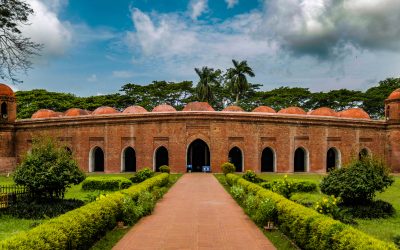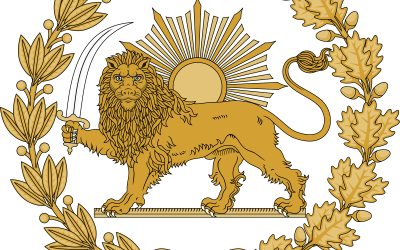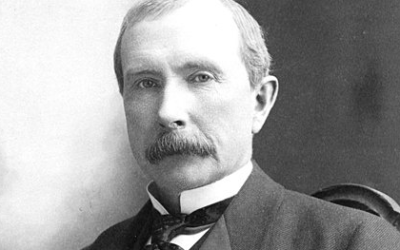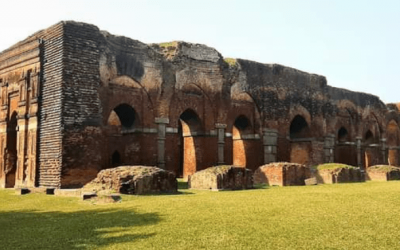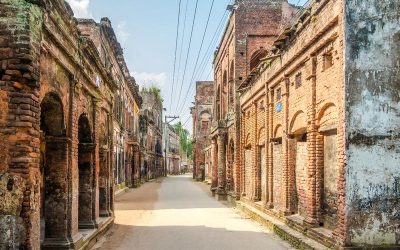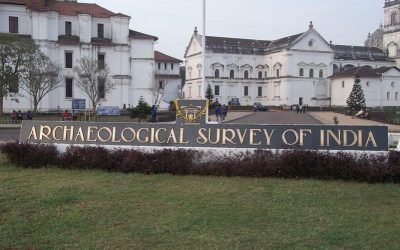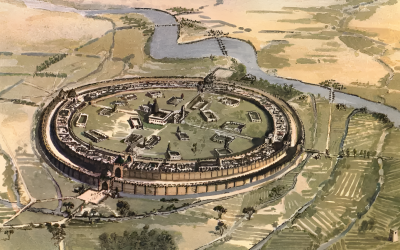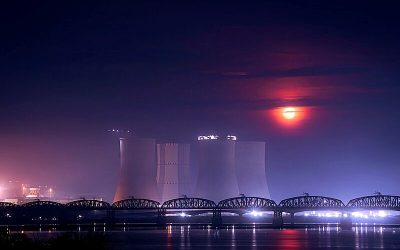Irfan Amin Patwary, Jahangirnagar University, Bangladesh
Bangladesh’s transportation landscape has long been characterized by a dynamic mix of traditional and modern modes of travel. From bustling rickshaw-laden streets to crowded buses and the occasional horse-drawn cart, the country’s transportation system has evolved through a blend of cultural heritage and necessity. Over the past few decades, rapid urbanization and population growth have exerted tremendous pressure on this already strained infrastructure, leading to chronic traffic congestion, environmental pollution, and a decline in the overall quality of life. Amidst these challenges, the introduction of the Metro Rail in Dhaka marks a significant milestone in transforming the urban transportation landscape and alleviating some of the longstanding issues.
Historically, Dhaka’s transportation system has been predominantly dependent on road-based vehicles. The city’s narrow streets and chaotic traffic flow have made commuting a daily ordeal for its residents. Buses, which serve as the primary mode of public transportation, are often overcrowded and unreliable, contributing to the inefficiency of the system. The prevalence of private cars and the increasing number of ride-sharing services have only exacerbated the congestion problem. With an estimated population of over 20 million people, Dhaka is one of the most densely populated cities in the world, and its transportation infrastructure has struggled to keep pace with the demands of its residents.
The introduction of the Metro Rail, officially known as the Mass Rapid Transit (MRT) system, represents a transformative step towards addressing these challenges. The first line of the Metro Rail, MRT Line 6, began its operations in December 2021. Stretching over 20 kilometers and connecting Uttara in the north to Motijheel in the south, this line serves as a crucial backbone for the city’s public transportation network. The Metro Rail promises to revolutionize commuting in Dhaka by providing a fast, efficient, and reliable alternative to road-based transportation.
One of the most immediate impacts of the Metro Rail is the reduction in travel time. The system is designed to operate at high speeds, significantly cutting down the time required to traverse the city. This has a profound effect on the daily lives of commuters, many of whom previously spent hours stuck in traffic. With the Metro Rail, a journey that once took over an hour can now be completed in a fraction of the time. This not only improves the quality of life for residents but also enhances productivity and economic efficiency by reducing the time lost to traffic congestion.
Moreover, the Metro Rail contributes to the reduction of traffic congestion on Dhaka’s roads. As more people opt for the Metro Rail, the number of private cars and buses on the streets is expected to decrease, leading to smoother traffic flow and less gridlock. This, in turn, reduces the wear and tear on the road infrastructure and lowers maintenance costs for the city. Additionally, the decrease in the number of vehicles on the road translates to a reduction in greenhouse gas emissions and air pollution, addressing one of the major environmental concerns associated with Dhaka’s transportation system.
The environmental benefits of the Metro Rail extend beyond just reduced emissions. The system is powered by electricity, which can be sourced from renewable energy, further minimizing its carbon footprint. The Metro Rail stations are designed with sustainability in mind, incorporating energy-efficient technologies and green building practices. This emphasis on sustainability aligns with global efforts to combat climate change and positions Dhaka as a forward-thinking city in terms of environmental stewardship.
Another significant impact of the Metro Rail is the enhancement of urban mobility and connectivity. The strategic placement of stations along MRT Line 6 facilitates easy access to key areas of the city, including business districts, educational institutions, and residential neighborhoods. This improves the overall accessibility of Dhaka and enables seamless transfers between different modes of transportation. For instance, passengers can easily switch from the Metro Rail to buses, rickshaws, or even bicycles, creating a more integrated and efficient transportation network. This multimodal approach not only enhances convenience for commuters but also promotes the use of public transportation over private vehicles.
The Metro Rail also plays a crucial role in promoting economic development and urban regeneration. The construction and operation of the Metro Rail have created numerous job opportunities, ranging from skilled labor in the construction phase to ongoing employment for train operators, maintenance staff, and station personnel. Furthermore, the improved transportation infrastructure attracts investment and stimulates growth in various sectors, including real estate, retail, and services. The areas surrounding Metro Rail stations are likely to experience increased commercial activity and property value appreciation, contributing to the overall economic vitality of the city.
Despite the numerous benefits, the implementation of the Metro Rail has not been without challenges. The construction phase faced delays and cost overruns, primarily due to land acquisition issues, bureaucratic hurdles, and technical complexities. The disruption caused by construction work also posed inconveniences to residents and businesses along the route. However, these challenges are not unique to Dhaka and are common in large-scale infrastructure projects worldwide. The successful completion and operation of the Metro Rail serve as a testament to the resilience and determination of the city’s authorities and stakeholders.
Looking ahead, the future expansion of the Metro Rail network holds great promise for further enhancing Dhaka’s transportation landscape. Plans are already underway for additional lines, including MRT Line 1 and MRT Line 5, which will extend the reach of the system and connect more areas of the city. The integration of the Metro Rail with other transportation initiatives, such as the Bus Rapid Transit (BRT) system and the development of pedestrian-friendly infrastructure, will create a more comprehensive and sustainable urban mobility framework.
Finally we can say that, the introduction of the Metro Rail in Dhaka represents a transformative shift in Bangladesh’s transportation landscape. By providing a fast, efficient, and reliable alternative to road-based transportation, the Metro Rail addresses longstanding issues of traffic congestion, environmental pollution, and inadequate public transportation. Its impact extends beyond just improving commuting times; it enhances urban mobility, promotes economic development, and contributes to environmental sustainability. As the Metro Rail network continues to expand, it holds the potential to reshape Dhaka into a more livable, connected, and sustainable city, setting a precedent for other urban centers in Bangladesh and beyond.


